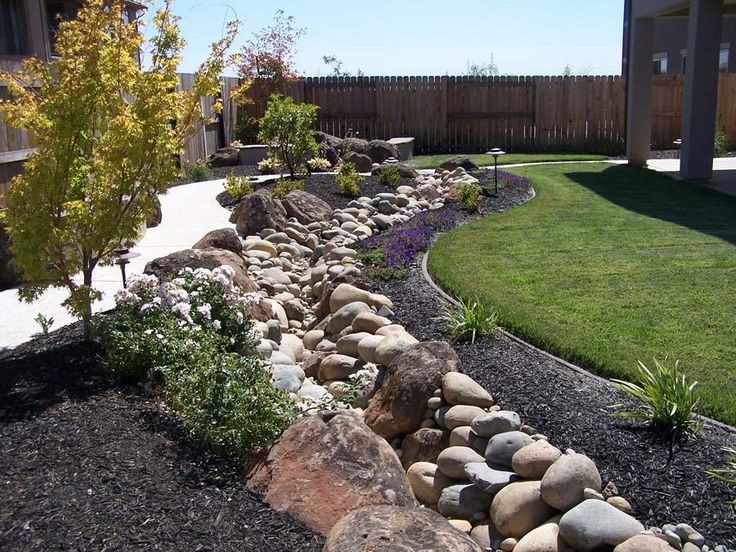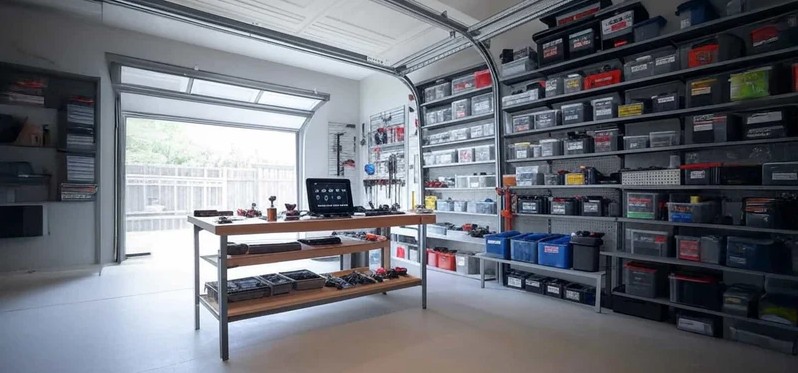When you live in a flood-prone area, your garden isn’t just for enjoyment; it plays a vital role in protecting your home.
With thoughtful landscaping, you can manage excess water gracefully and still create a space that feels inviting.
It’s all about working with nature, not against it.
Shape the Land to Manage Water
Before you begin choosing materials or digging trenches, take the time to observe how water moves across your garden.
After a good downpour, where does it pool, trickle or disappear? The answer lies in your garden’s topography.
Even subtle slopes influence water flow, so use a simple string line and spirit level to map the gradients. A basic sketch of your space, marking key problem areas, gives you a clearer view of what needs attention. From here, you can plan more effectively.
Consider also how nearby buildings, fences, or hardscaping might redirect water onto your property. These overlooked features often play a larger role in drainage issues than people expect.
Adjusting their layout or adding diverters can prevent unnecessary runoff from becoming a recurring concern.
If you’re unsure where to begin, this is precisely where professional landscaping can make all the difference. With the right expertise, tricky drainage patterns become easier to understand, leading to smart, tailored solutions that save time and prevent future frustration.
Use French Drains for Hidden Flow
One of the most reliable drainage systems around, French drains are as practical as they are discreet. They work by guiding water away from problem areas via a gravel-filled trench that houses a perforated pipe.
To install one, dig a trench about 30 cm wide and 45 cm deep, gently sloping it away from your home.
After lining it with landscape fabric, lay down gravel, then place the pipe with its holes facing downward. Add more gravel until you’re 5 cm from the top, fold the fabric over, and finish with soil.
It’s worth noting that the soil type in your garden affects how efficiently French drains perform. In areas with heavy clay, the system may need to be paired with additional drainage layers or deeper trenches to keep things moving.
While this is manageable for handy gardeners, having it installed by experts ensures it lasts the full 15 to 20 years with minimal fuss.
Once in place, it’s virtually invisible, but quietly keeps your garden drier and safer.
Plant Rain Gardens for Natural Drainage
Rain gardens offer a softer approach to drainage, capturing stormwater runoff and allowing it to soak gently into the ground. They also help filter out pollutants before they can reach local waterways, all while adding a lush, decorative touch.
Choose a spot at least three metres from your home, ideally beneath a downspout or beside a paved area.
Dig a shallow basin, roughly the depth of a boot, and fill it with compost-rich soil that drains freely. This prevents water from lingering too long and encourages healthy plant growth.
Furthermore, fill your rain garden with moisture-loving native plants such as irises, rushes, or sedges. These not only manage water effectively, but also attract butterflies and birds.
Remember to cover the soil with mulch to retain moisture and discourage weeds.
If space allows, you can consider linking several small rain gardens throughout your landscape. This chain effect creates a network that gently manages large volumes of water across the whole property.
Done well, a rain garden dries out within a couple of days and becomes a quiet focal point, requiring little maintenance but offering plenty of charm.
Lay Permeable Paving for Smart Soakage
Where solid paving forces water to run off quickly, permeable alternatives allow it to filter through gradually, reducing the risk of flooding. It’s an elegant solution for paths, patios, and driveways alike.
Options include porous concrete, permeable bricks or spaced paving stones laid over a crushed stone base. A depth of at least 15 cm ensures effective drainage, and filling the joints with specially designed grit or sand enhances water absorption.
To keep everything working properly, give these surfaces a regular clean with a pressure washer to prevent debris buildup.
When installed correctly, permeable paving can handle a surprisingly heavy downpour, offering peace of mind without sacrificing appearance.
For best results, combine permeable paving with gentle slopes or adjacent planting areas. This ensures that filtered water has somewhere safe to go, rather than backing up beneath the surface.
Channel Water with Gentle Swales
Shallow, planted channels are a clever way to guide rainwater through the garden, slowing its flow and giving it time to soak into the soil. They’re especially effective in sloped areas where runoff tends to rush unchecked.
To begin, pinpoint natural low spots and link them with a gentle, curving dip in the land. A gradient of 1 to 3% ensures steady movement without building momentum.
Next, line the channel with native grasses and deep-rooted plants to anchor the soil. For added impact, pair this setup with berms, raised mounds on the lower side, which help trap more water during heavy bursts.
Finally, add river stones at key points for erosion control and character. With routine clearing, this system blends in naturally and performs reliably for years.
Add Retention Basins for Heavy Rain
During sudden downpours, retention basins step in as temporary holding areas, collecting excess water and releasing it gradually into the ground. In particular, they’re useful in clay-heavy soil or places vulnerable to flash flooding.
First, locate the basin in a naturally occurring water-gathering area and increase its capacity by about 20% compared to typical rainfall. Shaping the edges with gentle slopes keeps it safe, especially for households with children or pets.
Then, surround the space with various moisture-tolerant plants like marsh marigolds, ornamental grasses, and hardy shrubs. These soften the appearance and boost absorption.
For added reassurance, include an overflow outlet to handle extreme weather.
If space is limited, a dry well offers a compact alternative. Though less visible, it still helps manage runoff.
Together, these solutions form a strong foundation for flood-ready landscaping.
Conclusion
There’s real satisfaction in a garden that’s both beautiful and built to withstand the weather.
With thoughtful drainage, clever planting, and natural features like swales and rain gardens, you can protect your home without compromising on charm.
It’s a practical kind of beauty that is steady, subtle, and built to last.







